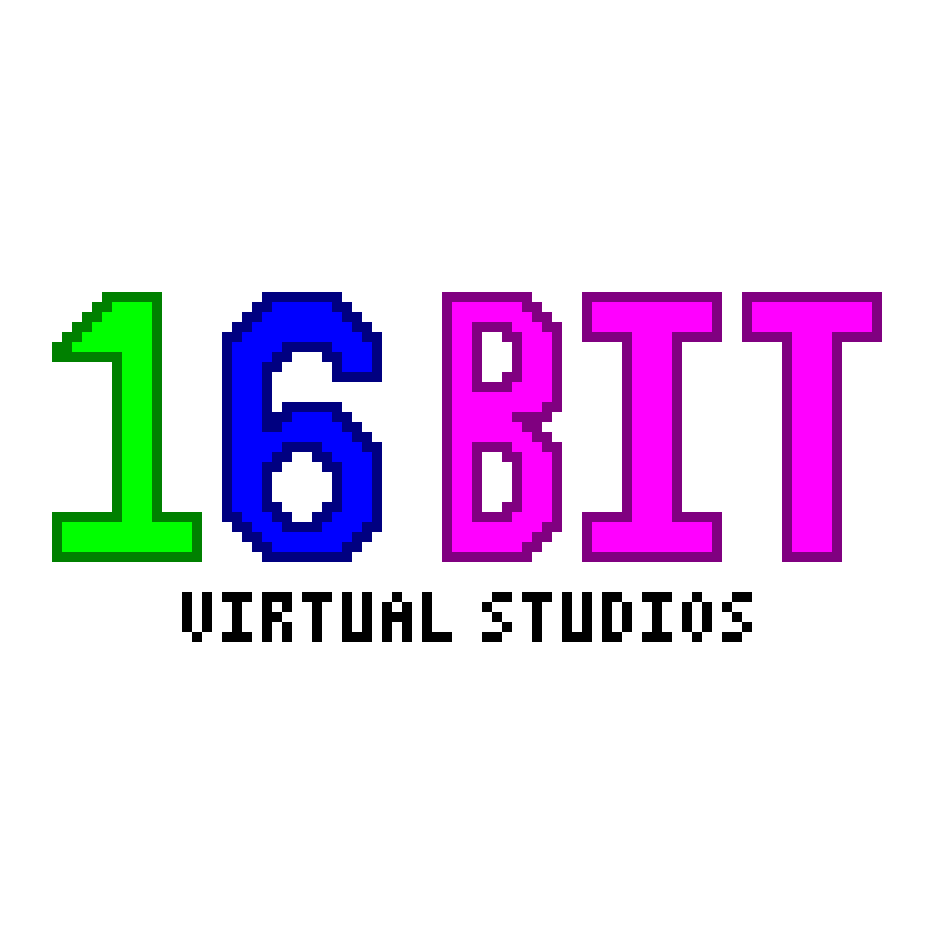Windows has been a thorn in my side for years. But ever since I started moved to Linux on my Laptop and swapping my professional software to a cross platform alternative, I’ve been dreaming on removing it from my SSD.
And as soon as I finish my last few projects, I can transition. (I want to do it now).
Trouble is which I danced my way across multiple amazing distros, I can’t decide which one to land on since the one software I want to test, Davinci Resolve doesn’t work on my Intel Powered Laptop. (curse you intel implementation of OpenCL).
So the opinions of those of you who’ve used Davinci Resolve, Unity/Godot, and/or FreeCAD. I want it to be stable with minimal down time on hardware with a AMD Ryzen 5 1600x and a RTX 3050. Here’s the OS’s I am looking at.
CentOS (alt Fedora)
- Pro: Recommended by Davinci Resolve for the OS, has good package manager GUI that separates Applications and System Software (DNF Dragon), Good support for multiple Desktop Environments I like. Game Support is excellent and about a few months behind arch.
- Con: When I last installed Fedora my OS Drives BTFS file system died a horrific and brutal death, losing all of my data. Can’t have that. And I personally do not like DNF and how slow it makes updating and browsing packages.
Debain (alt Linux Mint DE)
-
Pro: The most stable OS I’ve used, with a wide range of software support both officially in the distros package manager, or from developers own website. I am most familiar with this OS and APT
-
Cons: Ancient packages which may cause issues with Davinci Resolve and Video Games. An over reliance on the terminal to fix simple problems (though this can be said for most linux distros). I personally don’t like APT and how it manages the software.
EndevourOS (alt Manjaro)
-
Pro: The most up to date OS, great for games with the AUR giving support for a lot of software which isn’t available on other distros.
-
Cons: Manjaro has died on me once, and is a hassle to setup right and keep up. EndevourOS has no Package Manager GUI, and is over reliant on the Terminal. Can’t use pacman in a terminal the commands are confusing.
OpenSUSE Tumbleweed
-
Pro: Like Fedora but doesn’t use DNF, good game support
-
Cons: Software isn’t as well supported.
I should point out that openSUSE also uses btrfs. I feel I should also point out that that neither it or Fedora has to be installed on btrfs.
I use Fedora Kinoite myself
This Lemmy BBQ has been the most entertaining yet… First off, now that the drunk uncles are finally showing up and the conversation has meandered away from OP’s original question, I would like to say thank you OP - I was stoked to find your retro-gaming youtube. So good man!
The next bit of entertainment are the aforementioned drunk uncles scrapping it out on the lawn mid-post. Who has the bitchin’est Camaro? Nevermind that for a moment. Did Uncle Vinnie and Uncle Scotty say their FIREBIRDS are the bitchin’est? Fuck those guys! Linus from the Linus Tuner Garage out on the coast at 138 Richmond and Main said he busted the shit out of the Firebird dashboard that one time. Nah man, that was a Civic, but whatever, Firebirds blow. Pontiac is a shitty company anyway. Um, aren’t they all GM. Yeah, but Firebirds have that shitty design on the hood and crap aftermarket support.
Why don’t we all just sit around the Grill. Pick your steak, have a beer…
And thank fuck we aren’t using Windows 11
Yeah I didn’t expect the neighbour 3 doors down with their lifted pickup to show up. But it’s all fun, until someone mentions German cars and how unreliable they are when they start breaking down and how they’ve always been bad.
I got my answer eventually, but it’s sad the OpenSuse guys didn’t show. But that just shows how many people use their distro.
Also I am shocked anyone can find my channel, and happy you’ve enjoyed it. I made a video about ditching Windows and how 11 policies sucks, and would love to do more. But when I try the script becomes dull so I scrap it. Hoping there’s content when I eventually try this but Series 9 first.
I will check out the the Win 11 migration vid. Yeah, would definitely like to learn more about OpenSuse. Seems there is a lot of chatter about it on Linux@lemmy.ml
Perhaps will install it on something and tinker with it.
If you need DaVinci Resolve, just know that when you switch to Linux, you will lose the ability to read and render mp4 files. You will need to buy the full version to be able to do this on Linux.
I use my desktop primarily for video editing, 3D modeling, and a bit of gaming, and it’s been running Pop!_OS since December with absolutely zero issues. The only annoyance has been the mp4 file thing in DaVinci.
Yeah, I bought Resolve Studio when I switched over from Vegas. I’ve been planning this move for a while.
Handbrake if u are still having issues
I’m just gonna say, go with something Debian based. MX Linux is very solid.
Wouldn’t recommend it as its a little bit obscure and doesn’t use systemd
It does use systemd, just not by default. One small change to GRUB and it’s done.
Also, it’s literally the most popular distro on Distrowatch, so I don’t know what you mean by obscure. More popular than Mint, even.
It doesn’t matter that much, but I like Arch… it’s a bit of a pain to install if you are new to Linux though. I find it more stable than Manjaro though.
Your decision probably should depend on if you like KDE or Gnome and if you want the latest software or something a bit more stable.
You could also try the live version first before you install it to make sure everything works as intended.
It isn’t a pain anymore. Installing Arch is way easier than any of the distros out there today, be it Gentoo, Slackware, NixOS and GuixSD.
I don’t think that’s true, but I do love Slackware also… used it for many year. Maybe you just didn’t realize you have gotten better.
For the DE I’ve settled on Cinnamon. I like KDE plasma, but it’s missing features, gnome has everthing but I don’t like its interface.
Have you tried kde plasma 6, I have always wanted to use kde but gnome had a better experience for workspaces until 6 came out and fixed all that I wanted.
Yeah I have an arch in a bum to toy with new release like this. KDE 6 feels like KDE 5 with some slight tweaks.
Doesn’t sound like praise but considering how buggy KDE was in Wayland before this is a massive improvement. Still not my cup of tea and Libre Office still has issues with separate icons in the task bar.in Wayland.
That’s surprising to hear since KDE is one of the most feature-packed DEs. What features do you reckon are missing?
For me it was two issues. The first was its online account integration, never saw my calendar on my desktop and the community work around didn’t work.
The other issue was when your desktop was resized the icons would be rearranged. So if I plugged my laptop into a monitor I had to rearrange everything.
Outside of that is my person grips with most KDE software and rough edges.
The eco system is frustrating, as soon as i see “plasma” or “k” as the first letter of a package name I can be sure that it’ll have 20 other packages as dependencies, about half of the 20 are full featured gui applications
Pop_OS is a good choice for a gaming machine, it was perfect for like 4 years until I upgraded my 1080TI for a 7900XTX and the Mesa version was too old to run it at the time so I switched to Manjaro.
Personally I hate most Arch based distros with a burning passion. Like I have used arch wiki to install Arch at least 3 times after it had shit the bed during an update. Now if I need to open a terminal to install a distro I’m not installing it. I just wish the people maintaining Manjaro weren’t so incompetent and also include common codecs (h264 and h265) in Mesa like every other distro.
Mint is the typical way to get a more up-to-date Debian and if you have something against Ubuntu. This community is pretty anti-Canonical so they’ll never recommend Ubuntu…
I used Ubuntu happily for many years and found nothing that suited me better.
However, with them pushing more and more updates in my face that I can only install if I register an account, I will try to switch to Endeavour on my main system soon.
Between the snaps crisis and the ads in the terminal ubuntu seems to be doing its best to scare off regular users.
I dislike that kind of people. They are biased, opinionated, subjective and do not have the asker’s best interests as priority.
Oh I don’t like Ubuntu, but unlike this community it’s more an in general distaste for the OS than anything specific.
I’d go with Ubuntu lts or Ubuntu neon (lts+latest KDE)
Mint might do ya then if you want to remain in the .deb system. I ran it for a while and was happy with it. I’m on popos now but it’s based on Ubuntu lts only so it’s not quite as up to date at times.
I think Mint is your best choice. Mint is not Ubuntu, even if the underlying base is based on Ubuntu. It doesn’t have snaps for example, and a lot of the ubuntu fluff and slowness has been cut out. For example, Mint Cinnamon uses 1.2 GB of RAM on a clean boot, but it uses 1.9 GB on Ubuntu-Cinnamon. It’s a cleaner system.
I’ve been scared by Ubuntu. Back in the day (10-20 years ago) it worked well its kind of fallen down. I blame snaps.
You sound like you’d be pretty capable, I personally use arch, less perceived limitations. Endeavour is the better choice between endeavour and manjaro.
MX if you just want a os with beautiful theming.
Either way good luck.
Garuda is my arch distro of preference. Easy install and better default capabilities.
Mint or MX for a standard windows converter distro?
Web surfing and gaming.
MX might be slightly easier due to MX Tools. Otherwise it’s a matter of taste: xfce vs cinnamon, thunar vs nemo, etc.
Both should work great, just take care to install packages like steam or lutris through flatpak. And if you’re setting it up for someone else, install some pm frontend like discover or software centre, so that they can have unified updates through a gui.
It’s for me for starters.
Distro would be mint vs MX.
Cinnamon vs xfce is DE/Gui right? That’s the front end?
Eventually I plan to make HTPCs basically like a console replacement similar to/like steamOS
I’ve got some family that’s stuck on consoles and I want a gateway into PC gaming for them.
Cinnamon vs xfce is DE/Gui right? That’s the front end?
Yeah, and each distro has a DE they spend most of their time on. You can for example install mint with xfce, but it’s going to be far less polished.
For just surfing and gaming, it’s not really going to matter much. Try both of them out, and pick the one you think looks better. Ventoy will help you out with that.
Eventually I plan to make HTPCs basically like a console replacement similar to/like steamOS
You can just autostart steam in big picture mode.
Thanks.
For the HTPC I was thinking of something like plasma-bigscreen so it’s a media center.
Kodi, steam big screen, gog(?), etc
I’ll make one for myself to see if I can streamline it.
Depends on the person, I didn’t get on well with many distros, I like tinkering, arch afforded me that.
Some people are happy jumping in the deepend and having converter distros may alienate some new users.
Is there much different between MX and Debain Stable it’s built on?
MX has a ton of tooling and a newer kernel. It also doesn’t use systemd for some reason.
Not sure to be honest, my experience with MX and Debian are limited, I like how MX looks, had no issues using in in the small amount of time I had used MX linux and I’m a sucker for good theming
“dnf -C …” may change your life!
Do not use Manjaro. It is a known trap. What you can do is install pamac, which is what Manjaro uses for GUI package management. It’s been a hot minute since I’ve used Arch, so here’s a tutorial:
https://itsfoss.com/install-pamac-arch-linux/
Alternatively you could look at Garuda, which is a solid Arch distro. You’ll either love or hate the theme, but that’s easy to change. It also comes with an interactive kernel by default (most distros use a regular kernel build, which works better for servers).
Whatever you do, please please please not Ubuntu. It’s the lowest common denominator. Emphasis on “lowest”. It was good in the past, but Canonical have really lost the plot.
Could you elaborate on what you mean by Manjaro being “a known trap”?
Not the above poster but Manjaro routinely pushes out broken packages, has had a number of issues with security (not renewing their tls certificates for their website) and is all around not stable. Arch is a predictable unstable, manjaro is an unpredictable unstable attempt at stable.
Found this file by user “arindas” on GitHub which seems to highlight a lot of the issues that I’ve been seeing. To summarize:
Package Management
Manjaro maintains a separate repository that is not in sync with Arch’s main repositories which means Manjaro is not just Arch. To add to that, even Manjaro wiki states that it is not Arch!
Source: https://wiki.manjaro.org/index.php?title=Manjaro:_A_Different_Kind_of_Beast
Manjaro claims to be stable just by delaying packages for a week. This is not an approach a stable distribution would take at all!
Say that a package in the AUR depends on a library, say libxyz. And libxyz is in the main repos, not in the AUR. The package is updated so that it relies on the new features introduced in libxyz’s version 1.1 however Manjaro delays packages so libxyz is still on 1.0 in Manjaro. If you update the package in Manjaro, it will break because Manjaro holds back packages. So the only way Manjaro can be stable is by literally forking all the Arch related repositories including the AUR and keeping them in sync.
However it is important to note that often these problems are isolated to single packages and not the system as a whole. Please read #25 (comment) for additional context.
Security
The Manjaro system updater used to have a serious security vulnerability [in 2018] which has fortunately been fixed.
Source: https://lists.manjaro.org/pipermail/manjaro-security/2018-August/000785.html
This is actually a core package, not an extra or community package. To quote the list,
I have discovered an issue with one of your core Manjaro packages, manjaro-system 20180716-1 and earlier. The issue allows a local attacker to execute a Denial of Service, Arbitrary Code Execution, and Privilege Escalation attack.
In an update, password less updates in pamac (Manjaro’s AUR helper) were sneaked in and from the look in the issue made concerning this, the change was made to look like a “feature”. This is a major security issue considering that packages in AUR are not checked by Arch Linux maintainers (and Manjaro does not maintain its own either). Some AUR packages were found to be malware in the past. So think about a casual user (Manjaro’s target demographic are not really power users) installing a harmless-looking AUR package that could potentially mess up their system!
Source: https://gitlab.manjaro.org/applications/pamac/-/issues/719
The post also mentioned an issue where the Manjaro updater used bad practices when updating packages such as using the
no-confirmflag. This appears to have been fixed from what I can tell.Manjaro let their SSL certificates expire not once, not twice, not thrice, but four times! The first time [2015], they asked the users to use a private window and/or change the system time.
Source: https://web.archive.org/web/20150409095421/https://manjaro.github.io/expired_SSL_certificate/
Changing the system time could have unintended consequences such as with cron jobs not running at the intended time. It’s also not a best security practice to use an incognito window to bypass the SSL expiry alert. The correct solution is to not let the certificates expire in the first place, which is not difficult and is done by all secure websites.
The second time when the SSL certificates expired [2016], they did the same.
Source: https://web.archive.org/web/20160528135123/http://manjaro.github.io/SSL-Certificate-Expired/
This time the Manjaro developers didn’t recommend changing the system time, but they still recommended creating an exception for the Manjaro website.
The third SSL certificate expiration was handled a little more sanely [2021].
The fourth time, HSTS was set but the website was still down [2022].
Source: https://web.archive.org/web/20221013234550/https://manjarno.snorlax.sh/expiry-2022-08-17.png
Sending Unexpectedly Large Traffic volume to AUR
I think some of the dates and sources in this section were wrong, but I did my best to correct them.
On 2021-04-26, the AUR (Arch User Repository) faced a huge web traffic spike from pamac clients, caused by a bad version of pamac, which is the default Graphical Package Manager for Manjaro
Source: https://gitlab.manjaro.org/applications/pamac/-/issues/1017
Manjaro developers have developed thorough technical solutions to mitigate the huge traffic spike from pamac installations [2021-10-02]. They have outlined the steps taken here #25 (comment)
Source: https://gitlab.manjaro.org/applications/pamac/-/issues/1161
On 2021-10-14, Pamac was once again blocked by the AUR for shipping another version that flooded the AUR with requests. However the updated version itself was meant to mitigate problems.
Source: https://gitlab.manjaro.org/applications/pamac/-/issues/1135
Additional sources: https://www.reddit.com/r/linuxquestions/comments/wqzrpl/did_manjaro_just_forget_to_renew_the_ssl/ https://www.reddit.com/r/linux/comments/q85t8n/deleted_by_user/
Even if packages weren’t broken, the fact that they make it easy to use the AUR is problematic because the AUR expects the latest packages from the Arch Repos. Often, AUR packages will break on Manjaro for that reason.
Can you provide a source about when and what package was broken?
Personally, no, i havent used manjaro in years. However, it’s frequently spoken about problem in the community so im sure someone else can help you. Or you could look up people talking about it.
I’m asking because I’ve used Manjaro for the last 5 years without problems. I think a lot of arguements against Manjaro here are just based on “that’s what I’ve read somewhere”.
Fair enough. I used to use Manjaro and it broke, cannot remember why. I moved to ubuntu sometime later and I’ve never left. Some would say that makes me a bad linux user, I would say I use an operating system that gets out of my way and let’s me use it. Use whatever tool gets the job done fastest!
EndevourOS (alt Manjaro) Cons: Manjaro has died on me once, and is a hassle to setup right and keep up. EndevourOS has no Package Manager GUI, and is over reliant on the Terminal. Can’t use pacman in a terminal the commands are confusing.
I hear this and I highly recommend Bauh. Its a GUI package manager that supports Arch, AUR, Flatpak and Snaps. Will even automatically generate snapshots in Timeshift before you update. Super easy to use. I can’t recommend it enough, I use it on all my desktops.
Is Buah better than pamac? It’s got to be right? pamac looks great but actually sucks so bad I learned to use Pacman in the terminal.
I use Bauh on my VM Endeavor install. Compared to using the terminal it’s amazing, but it feels limited. For example I can’t install multiple packages at once it I can with other distro’s gui.
Mint DE. Enable backports or whatever if you want to. Get a newer kernel. I’m on 6.1
If you are using this pc for work I’d guess you want the most stable system possible. Just pick Debian stable with backports, stick with the official repo + flatpak and you won’t have it fail on you unexpectedly ever.
My issue with just choosing debain is I don’t know if I’m sacrificing Resolve compatibility by choosing it.
Hm, I never used resolve so I wouldn’t know about that. I guess you will have to try it out and see if it works fine or not, installing debian 12 doesn’t take much time.
You can always use Docker and run it on a Rocky Linux image.
This is where Distrobox comes in. Simply spin up a tiny containerized Fedora, install Resolve. Everything else on your system can be rock solid Debian.
This gives you the best of both worlds.
I was a happy Ubuntu user for more than a decade and I agree that it’s a good beginners distro. I am now using Manjaro, which is also very good. In fact, Manjaro might even be more beginner friendly because it support Flatpak out of the box.
I used manjaro when I first started, but have had mixed success since then. Some criticisms here about shipping broken userspace (at least with their mobile OS): https://drewdevault.com/2022/08/18/PINE64-let-us-down.html
But, ubuntu is great for beginners, and i’ve always had good success with debian, although I’d point beginners to find an installer with non-free firmware until you know what’s going on
I feel like I should throw in a good word for Fedora. I run a combination of dnf and flatpak, and have a grand time, and am doing an IT diploma program aimed very solidly at Windows under Fedora. I’ve used Ubuntu, Mint, and Manjaro, and landed on Fedora for my desktop experience.
Don’t use Fedora with Nvidia. Fedora also isn’t suitable for any production machine.
Fedora’s KDE spin from April forward makes this a nonissue. Plasma 6 makes Wayland and NVIDIA get along like on any other machine. Plus it’s been splendid since Fedora 35 for me.
Edit: I only use Fedora for work, so not too sure what you mean. I make detailed graphical images which are blown up sizably and have had zero issue. Also never have had a problem sharing with Apple or Windows folks (jah help them).
I’m no big gamer, but my gaming laptop is a Ryzen with RTX3060, and I dual boot it (Fedora and Windows 10.) I used the rpmfusion Nvidia drivers, no issue, and I get slightly better frame rates and a bit better 3D mark scores in Fedora than Windows. It’s been that way since 37 or 36, I think. Palworld, Monster Hunter World and Rise, Genshin Impact (I know, I know), Borderlands, EDF 5, all work great, along with some retro stuff like City Of Heroes and EQ99. So, I guess I’d like to know why I shouldn’t use Fedora with Nvidia? Also, when you say production machine, do you mean like a server? I’m a student.
Fedora occasionally has issues since its a testing ground for RHEL. That means its going to change things a lot and that’s bad for systems that you use for work as I personally want stability. Nvidia also has a nasty habit of breaking with kernel updates.
I would’ve mentioned that Fedora takes a solid stance of free software but that’s no longer the case.














